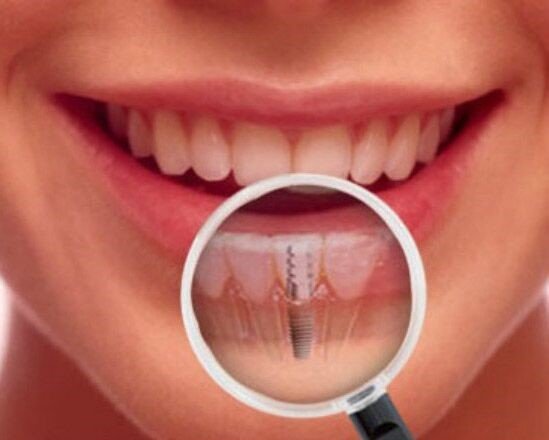What is All On 4 and how is the implant procedure?
Oftentimes patients will ask us what is All On 4 and how is it different from the conventional implant procedure?
All On 4 is a dental implant technique where the upper or lower set of teeth are replaced with just four implants. These four Implants act as a support mechanism for the placement of a new set of fixed teeth.
With the All On 4 dental implant procedure, the posterior implants are tilted 45° towards the rear of the mouth and placed into the anterior maxilla, a region of the jaw with higher bone density. Compared to other implant methods, the All On 4 technique doesn’t require the same density of bone in order to secure the implant.

The History Of The All On Four Technique
While the idea of having a full set of teeth, supported by just a few implant fixtures was not a new one, the concept of adopting a 45° angle for the posterior implants was what led to the evolution of All On 4™.
It was Prof Paulo Malo, from Portugal, along with implant manufacturer Nobel Biocare who were among the first to recognise the potential treatment benefits and cost-effectiveness of the All On 4™ technique.
In the 1990’s Prof Paulo Malo, and backed financially by Nobel Biocare, carried out a series of studies to determine the efficacy of this new and innovative approach. In 1998, Prof Paulo Malo treated the first ever patient with the All on 4™ technique.
Today, the All On Four technique is widely acknowledged as the superior treatment option for a full-arch teeth replacement.
Meanwhile, Prof Paulo Malo has become a world-renowned expert in advanced oral rehabilitation. He invented several other techniques to help patients with complex restorative cases.
In addition, Prof Paulo Malo authored a number of leading books in the field of restorative dentistry, released several scientific publications and lectured across the world on oral rehabilitation.
Off of the back of these achievements, Prof Paulo Malo created the ‘Malo Clinic Education’ in Lisbon, Portugal. Here he trained other restorative dental professionals, who were eager to develop their expertise in All On 4™ dentistry.
The Malo Clinic is one of the places our very own dental implant expert, Dr Theo Spyrakis has attended to further his knowledge, concepts and case experience with the All On 4™ technique.
Conventional Dental Implants Vs. All On Four
The dental implant itself is a small titanium screw that is positioned into the jawbone, and then support either a single tooth or a bridge of teeth. The titanium implant forms the foundation by which the replacement teeth are attached.
For the conventional dental implant procedure, a full arch rehabilitation required 6-8 implants to support a full fixed bridge.
Conversely, with just two implants positioned at the front of the mouth and two angled implants positioned at the back, only four implants are needed to provide support for the full arch.
The main limitation of the conventional full arch teeth replacement method arises when screwing the posterior implants into areas of reduced bone density. The introduction of the 45° angulated implant meant that bone-deficient areas of the jaw could be avoided.
The less invasive nature of the All On 4™ also means the healing and rehabilitation process is considerably shorter, and since fewer implant fixtures are used, there is more flexibility to design and fit the optimum replacement teeth.
Oral Bone Health Issues
The All On 4™ technique has given patients with oral bone health issues, a better choice. In the past, a lack of upper jaw bone (frequently caused by sinus issues or bone loss) was a big problem for implant candidates, and often required bone grafting to build the jaw up enough to support the 6-8 implants the old methods required.
But the All On 4™ technique has made a huge difference. And this is great news for patients with Osteoporosis or a lack of jaw bone.
For patients suffering with Osteoporosis, they often think that they’re not candidates for dental implants due to their poor quality bone. And in the past, that was definitely true. But because All On 4™ eliminates the need for bone grafting, patients suffering from osteoporosis are usually able to have the All on 4 procedure.
The same is true for patients who have severely resorbed upper jaws. The Zygomatic implants are a great option. These longer implants anchor to the underside of the cheekbones through the sinus space, bypassing the need to rely on the jaw bone as the sole source of support.
These innovative options can typically circumvent the need for invasive bone grafting procedures all together.
is ideal for patients who are anxious about having a surgical dental procedure.
is the use of IV sedation administered and monitored by a qualified and experienced medical doctor. A unique combination of drugs are used intravenously to create a calming, relaxed dream-like state for the entire procedure.
Can Anything Go Wrong With All On 4™?
Without a doubt, one of the biggest concerns from patients who are considering any kind of implant procedure, is to do with what could go wrong.
While the success rates of the All On 4™ procedure are very high, as with any surgical procedure, there are some factors to consider when making a decision about dental implant surgery.
A dental implant can fail, which you can read more about here. But when thinking about the All On 4™ procedure, there are two additional factors to consider;
All On 4™ Factor #1:
Poor Positioning of Implants
The single biggest mistake with the All On 4™ treatment occurs when implants are positioned poorly. Poorly positioned implants can compromise the cosmetic outcomes of the treatment.
When implants are positioned too far to the front of the mouth they cause the gums to recede and the dark grey metal of the implant can become visible around the gums.
When implants are positioned too far back they cause the shape of the replacement teeth to appear thick and bulky, and it can make it more difficult to speak.
When implants are positioned too close to the biting surface, it will mean the replacement teeth can look short, stumpy and this can feel unnatural.
Rectifying implants that have been inaccurately positioned can be a tricky process. This is why ideally, the dentist performing your All On ™4, will be equally skilled in both the surgical and cosmetic aspects of the procedure. You can read more about How To Make An Informed Decision On Your All on 4 Procedure.
The second factor to consider with the All On 4™ procedure, is…
All On 4™ Factor #2:
Cosmetically Trained vs Surgically Trained Dentists
There are generally two types of dentist that perform the All On 4™ treatment. One is surgically trained, while the other is trained in cosmetic dentistry.
Dentists who focus more on the cosmetic results, may be less experienced in the surgical aspects of the procedure. If complications arise and the dentist is not competent enough to deal with this, the implants can eventually become exposed and cause infection to the gums.
The other type of dentist who performs All On 4™ is a surgically trained dentist. A surgically trained dentists will do a great job placing the implant to the closest available bone, but is not always considering the aesthetic implications of the implant.
The best All on 4™ dentists are experienced and knowledgeable in both surgical and aesthetic dentistry, enabling them to accurately position the implants and utilising their experience in cosmetic dentistry to achieve a beautiful result for the patient.
Locating a dentist who combines these skills will be harder to find, but when doing so, you will minimise the risk of anything going wrong.







